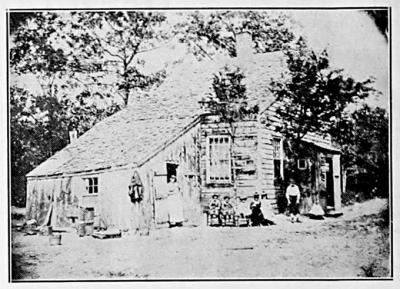Relay: Baby, Baby, Baby
Relay: Baby, Baby, Baby
If only, if only. If only I had known that Blossom Dearie was performing in New York into the early 2000s, when I was living there, a hungry musician who had somehow conned enough people to become the pro audio editor and then a senior writer at Billboard.
If only, if only I had really gotten to know Aretha Franklin’s catalog, and not just the hits that every wedding band from here to Siberia plays ad nauseam, and been thusly motivated to con my way into every concert within a 500-mile radius.
But there was that snowy, happy Sunday, late in the winter of 1996, on the Upper East Side. Was it her birthday? I don’t know, but a New York radio station was playing Aretha’s music all afternoon, and, armed with an ancient stereo packing a cheap cassette recorder, I filled every cassette tape I could find.
And then I was hooked. Like a drug administered by Dr. Feelgood, “Call Me,” “Ain’t No Way,” “I Say a Little Prayer,” “Angel,” “People Get Ready,” “Oh Me Oh My (I’m a Fool for You Baby),” “Tracks of My Tears,” and “Dark End of the Street” were the ones I could no longer live without. Most days, I would not leave the little apartment on East 91st Street for the long, early-morning trek to my crappy job as a Wall Street drone, in those unhappy pre-writing days, without listening to at least a few of them.
How to describe the joy and sorrow simultaneously conveyed in that voice, and in her own, just-right piano accompaniment? These were the very essence of the blues: within the anguish, the uplift; in the deepest despair, the eternal, perfect soul bared.
It’s in the desperate grieving of “Share Your Love With Me,” the soaring, piercing wails of “Ain’t No Way,” the galloping piano of “Since You’ve Been Gone,” the gentle introduction of “Baby, Baby, Baby” and its climactic middle 8:
Those that we love, we foolishly make cry
Then sometimes feel it’s best to say goodbye
But what’s inside can’t be denied
The power of love is my only guide
Baby, baby, baby, baby, baby, baby, baby, baby, this is just to say
Just how much I’m really gonna miss you.
And it’s in a thousand others, and the Soul Town station on SiriusXM Radio has been given over to the Queen of Soul in the aftermath of her liberation, last Thursday morning. It’s hard to drive with tears in your eyes, baby, baby, baby.
In his wonderful autobiography “Rhythm and the Blues,” the late Atlantic Records producer and executive Jerry Wexler wrote that “Aretha was continuing what Ray Charles had begun — the secularization of gospel, turning church rhythms, church patterns, and especially church feelings into personalized love songs. Like Ray, Aretha was a hands-on performer, a two-fisted pianist plugged into the main circuit of Holy Ghost power.”
I had one occasion to speak with Wexler, who later in life lived in East Hampton, and with whom I shared something beyond our love of rhythm and blues. As a music journalist at Billboard, he coined that term, rhythm and blues, in 1949, for what the trade previously called “race records” and, before that, the “Harlem Hit Parade.”
I interviewed Wexler, in 2002, because I was writing Billboard’s obituary for Tom Dowd, a longtime Atlantic Records producer and engineer. “By 1967,” I wrote, “Dowd was recording and mixing one hit after another at Atlantic Studios. Paired with the recently signed Franklin, Dowd and Atlantic producers [Ahmet] Ertegun, Wexler, and Arif Mardin formed a team that seemingly couldn’t miss. . . . Between Feb. 8 and Dec. 17, 1967, Dowd recorded and mixed Franklin’s ‘Respect,’ ‘Chain of Fools,’ ‘Baby, I Love You,’ and ‘Since You’ve Been Gone,’ all of which topped the Billboard R&B chart. ‘(You Make Me Feel Like) A Natural Woman’ and ‘Ain’t No Way,’ also recorded in 1967, reached Nos. 2 and 9, respectively.”
If only I had seen Aretha in concert. The closest I came wasn’t very close. In February 2003 I spent an afternoon at Madison Square Garden, one day before the Grammy Awards were to be held, interviewing the remote recording and broadcast crews as they prepared to broadcast the event in 5.1-channel surround sound for the first time. “The raw excitement in Effanel Music’s remote recording truck, known as L7, was every bit as palpable as the awareness that new ground was bring broken,” I wrote in Billboard (hey, I’m no Aretha Franklin).
But Aretha was going to read the nominees for Best Something-or-Other and, standing in the cheap seats a hundred feet away, I watched the Queen, clearly bored, run through her lines from a teleprompter during the rehearsal. She did not sing, but at least I heard, from her lips to my ears, that voice.
I like to think that musicians have no use for racism, that petty differences like the color of one’s skin are forgotten as quickly as they are observed, dissolving in the communal act of soulful expression, and in one player’s reverence for another’s playful, sublime, or just downright funky creation.
Amagansett’s own Paul McCartney, whose songs “Let It Be” and “The Fool on the Hill” Franklin chose to record, provided solid evidence last week. While the president, whose administration resembles a monster truck rally a little more every day, remembered of Aretha that “She worked for me on numerous occasions,” Mr. McCartney took to the president’s preferred medium, Twitter.
“Let’s all take a moment to give thanks for the beautiful life of Aretha Franklin, the Queen of our souls, who inspired us all for many many years,” he wrote. “She will be missed but the memory of her greatness as a musician and a fine human being will live with us forever.”
Christopher Walsh is a senior writer for The East Hampton Star.

